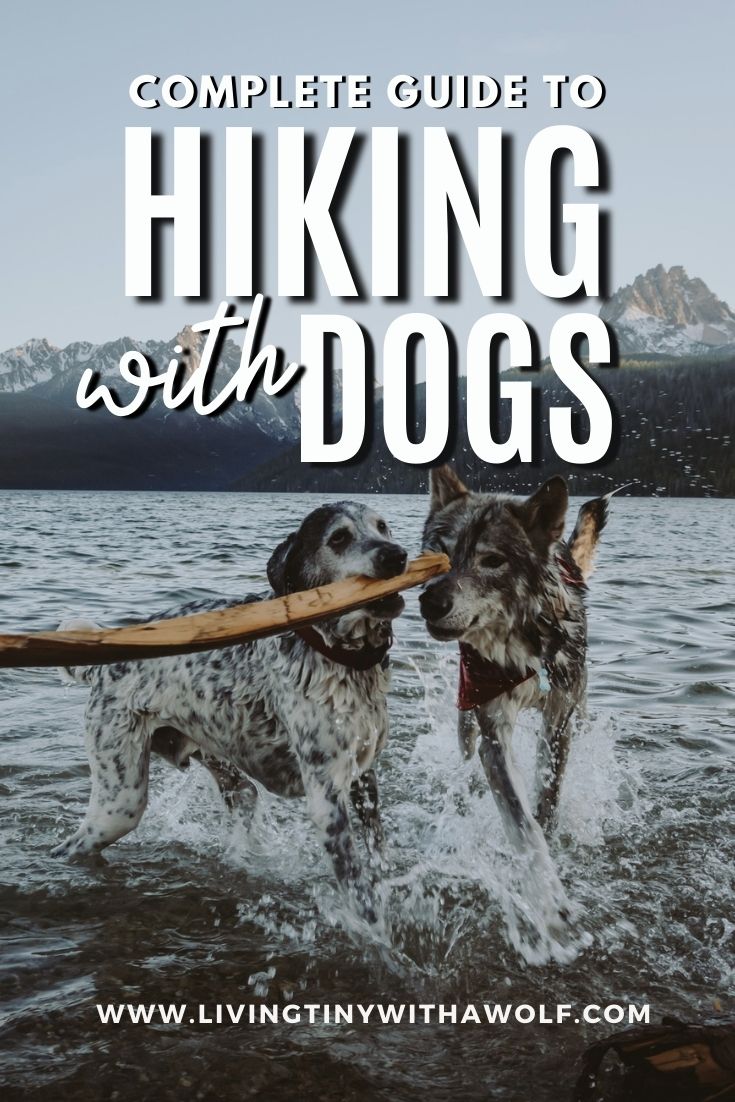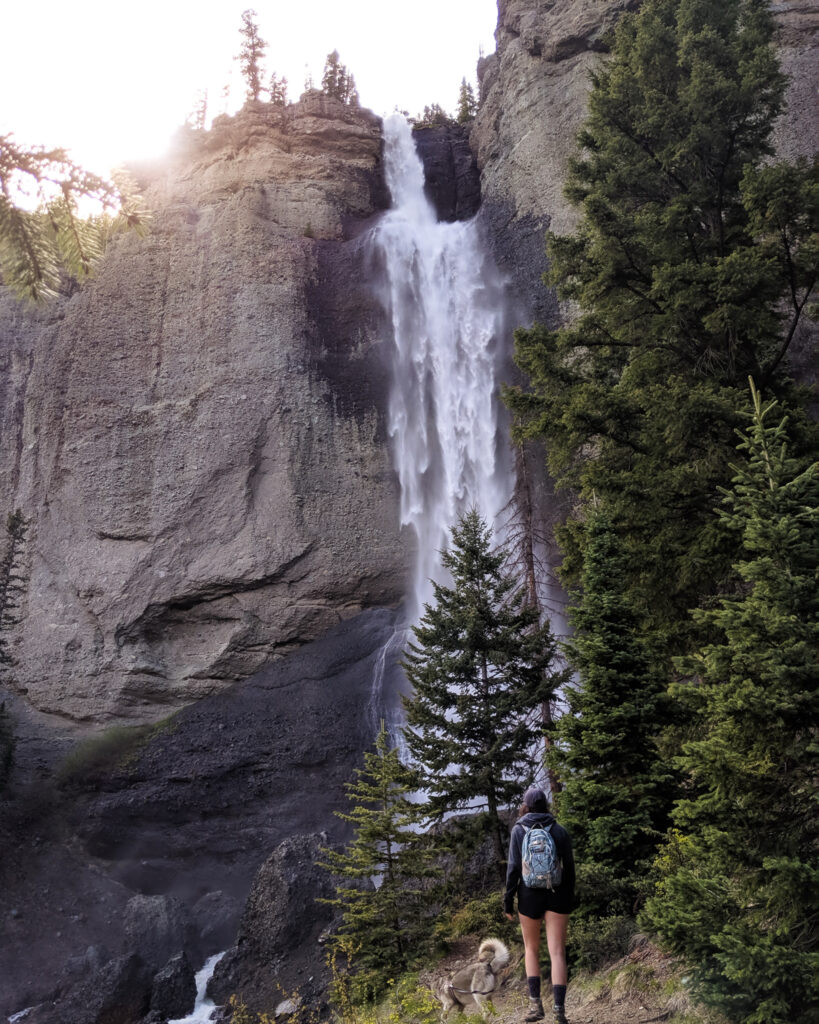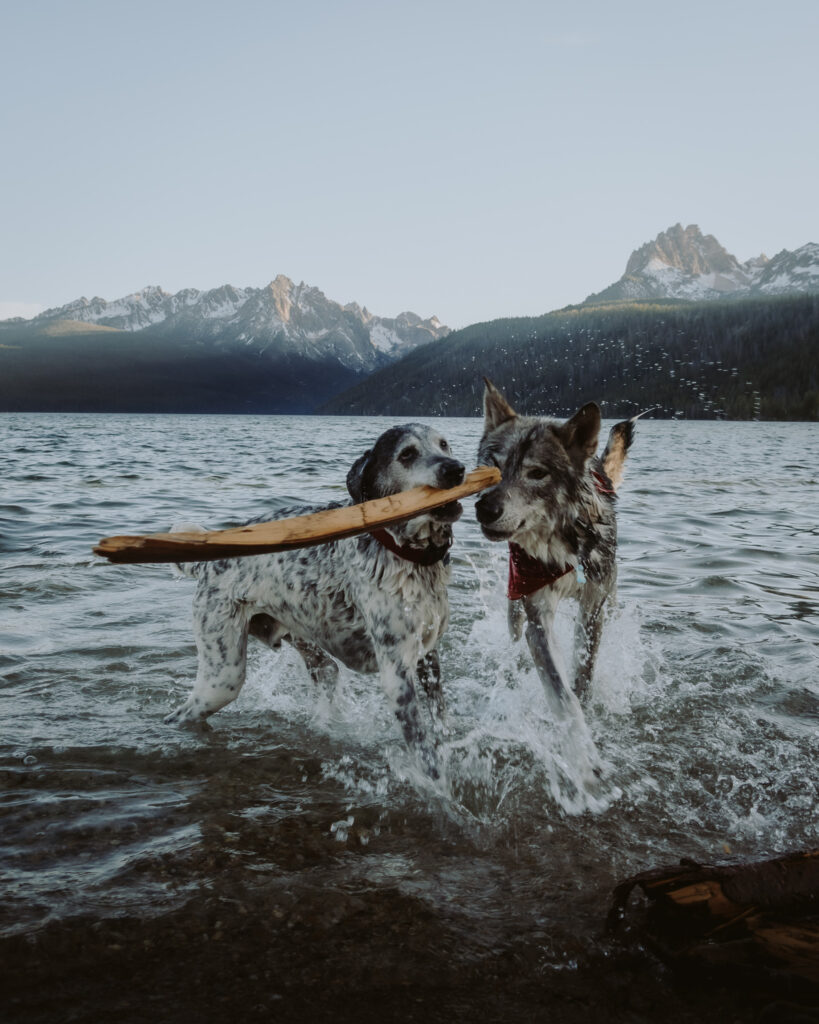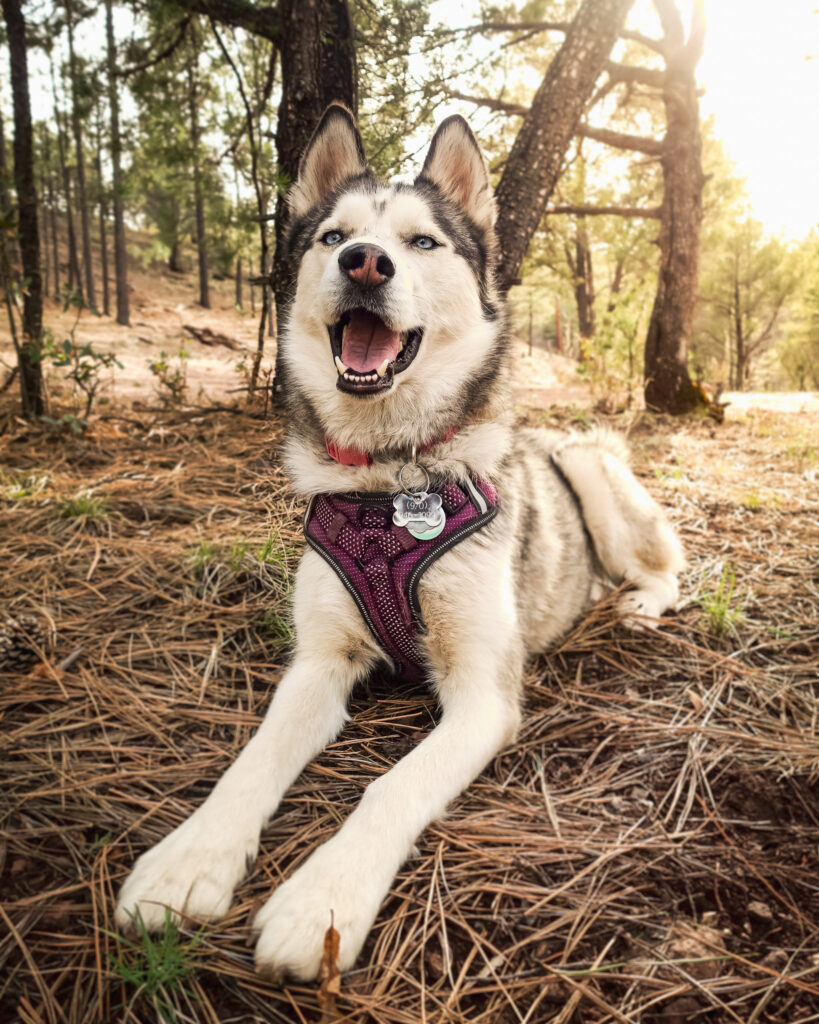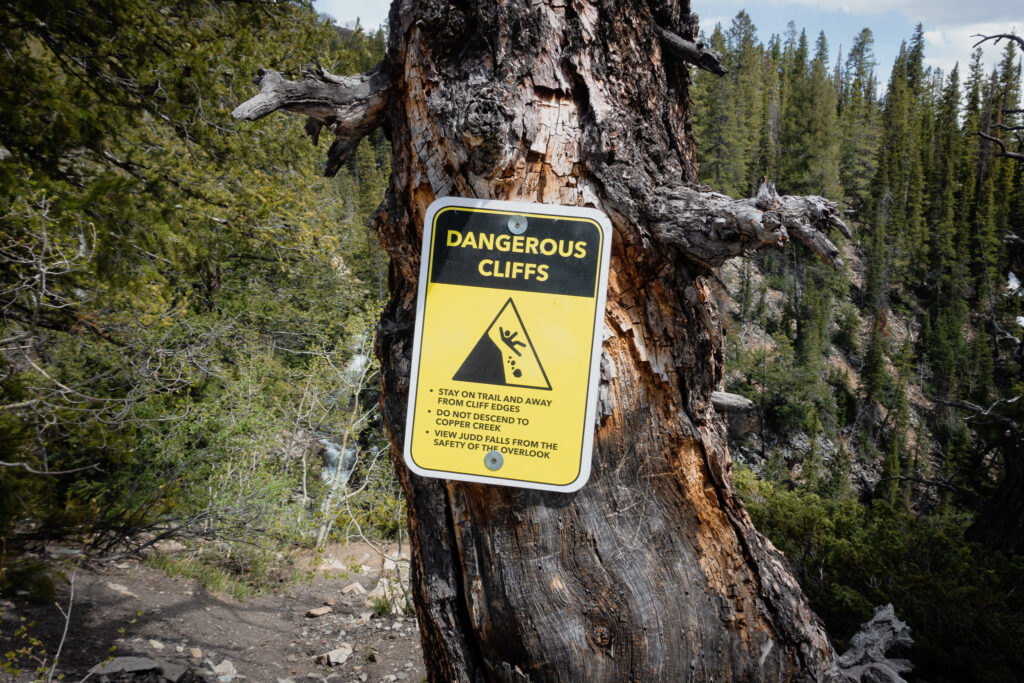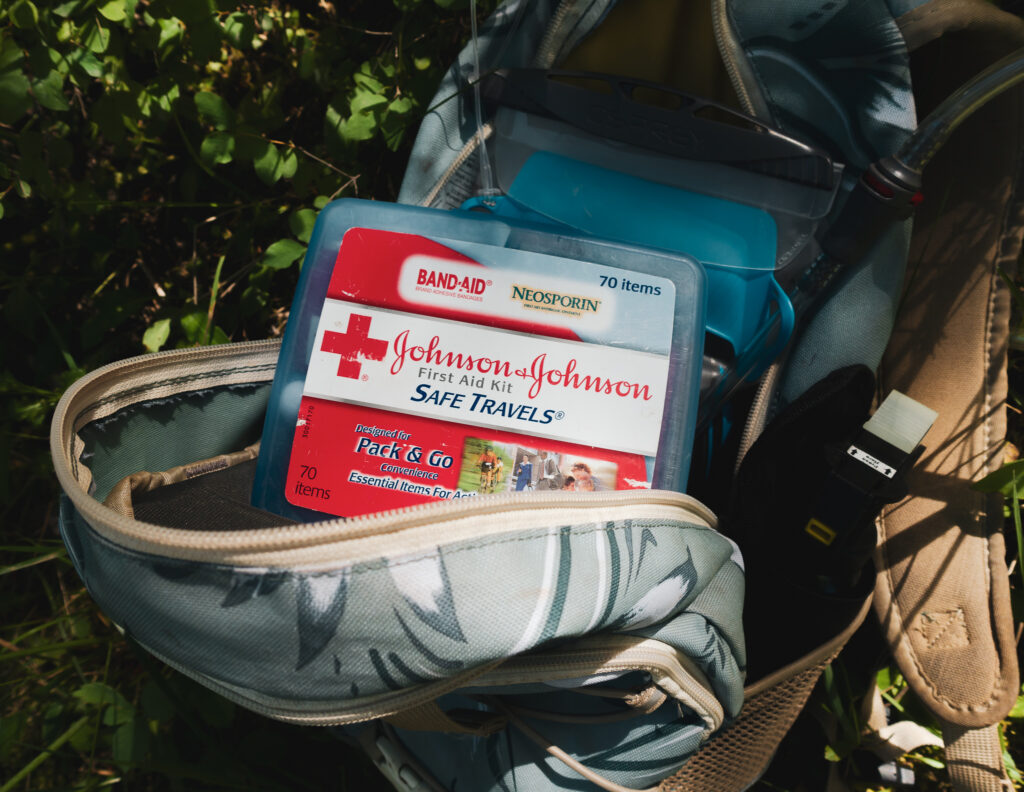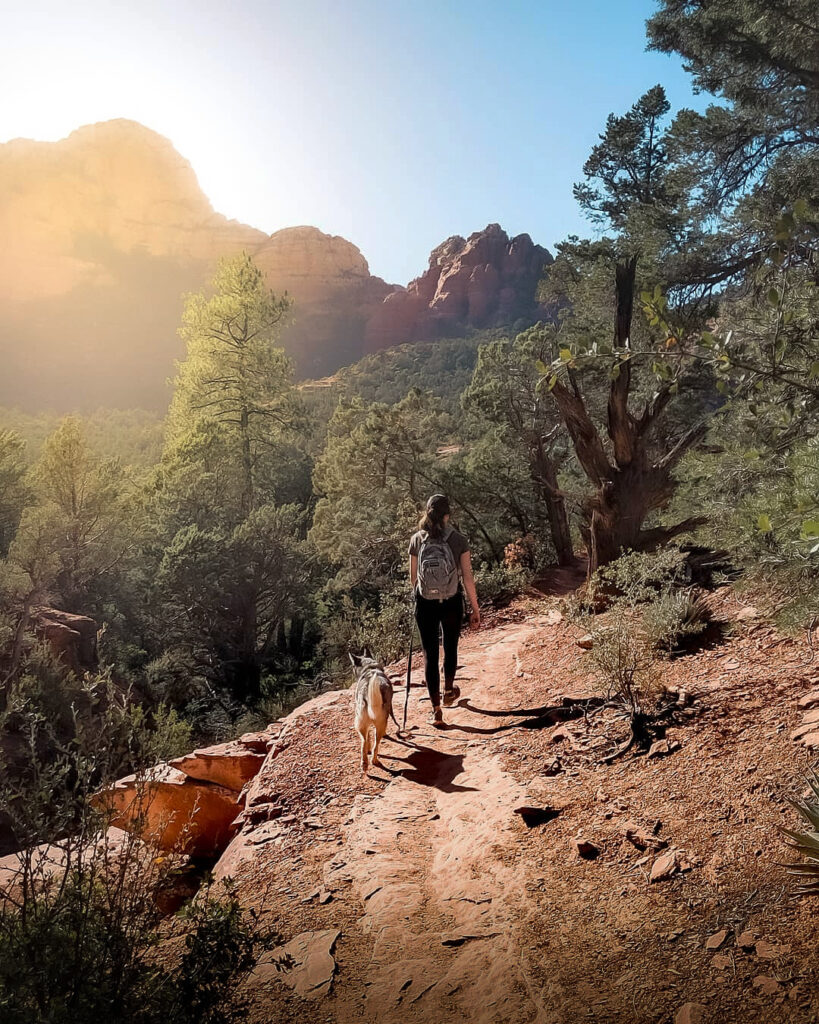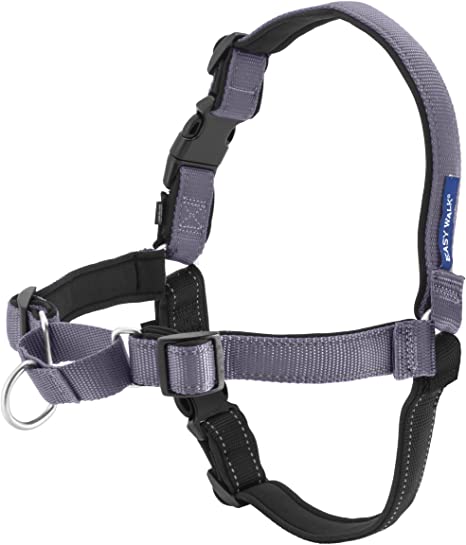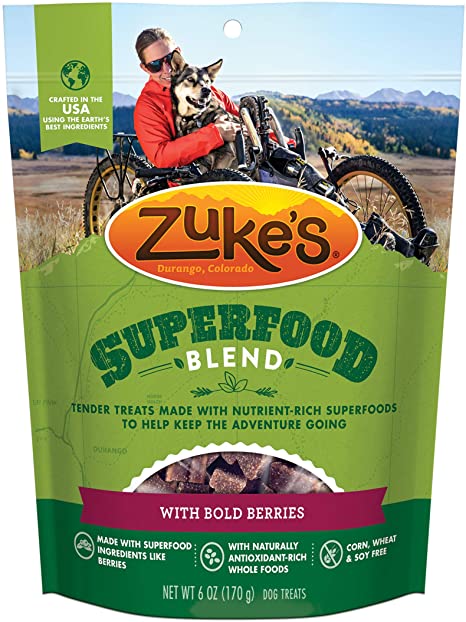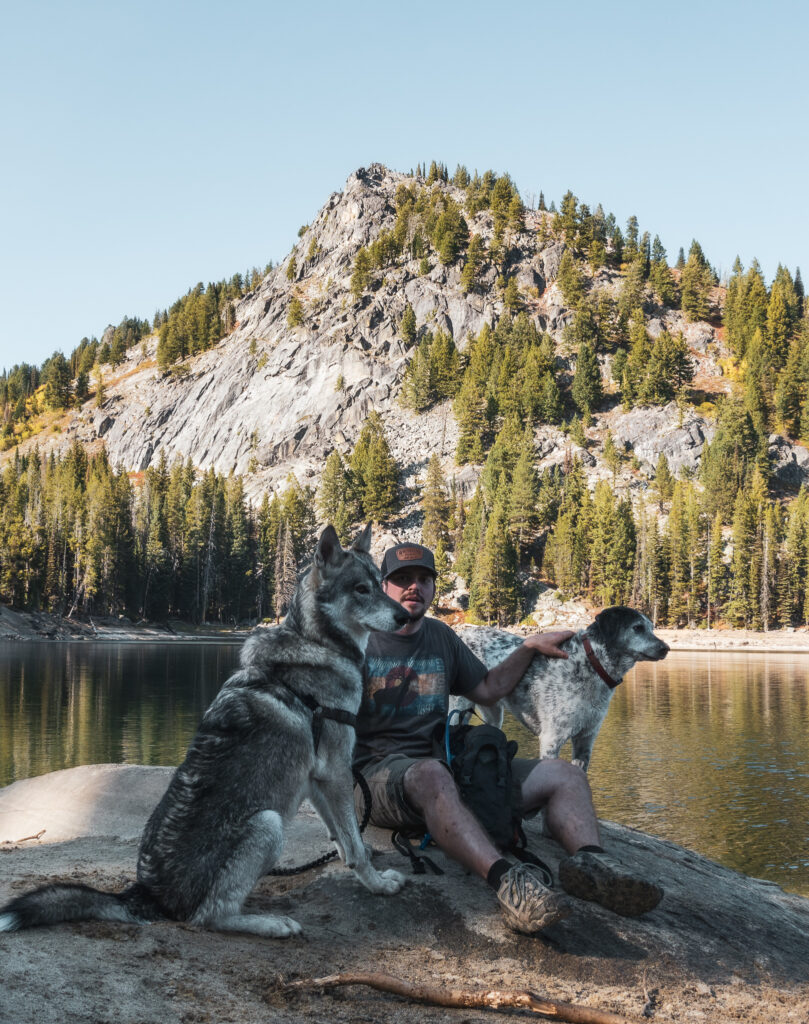The Complete Guide to Hiking with Dogs: Tips and Gear for the Trail
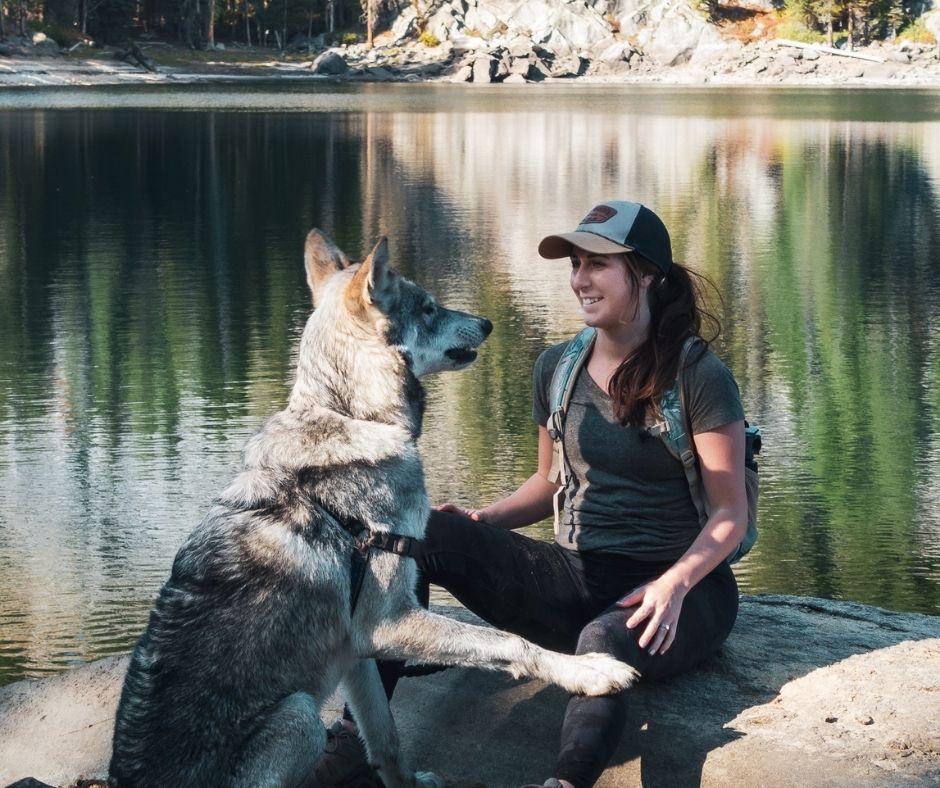
As avid hikers and dog owners of three furry companions (an 11-year-old pointer mix, a 5-year-old husky, and a 4-year-old mid-content wolf dog) we know firsthand how much joy and adventure hiking with dogs can bring.
That’s why we’ve put together this complete guide to hiking with dogs, to help other pet parents prepare for a safe and enjoyable hike with their four-legged friends.
Whether you’re a seasoned hiker or new to the trails, hiking with dogs requires some extra preparation and gear.
In this guide, we’ll share our favorite tips and gear for hiking with dogs, so that you and your pups can hit the trails in comfort, style, and most importantly, safety.
Affiliate links may be sprinkled throughout this awesome, free content you see below. I’ll receive a small commission when you purchase from my links (at no extra cost to you), which I’ll totally blow on adult things like dog toys and chai tea.
Table of Contents
ToggleFirst of all, Is it Safe to Hike with a Dog?
Some people may ask, “Is it safe to hike with a dog?” The answer is, it depends, especially when it comes to puppies and older dogs. While dogs can be trained to hike and love being on the trail with you, it’s important to take their age and physical condition into consideration before heading out.
Considerations for Puppies
When it comes to puppies, it’s important to remember that they may not have developed the strength and endurance needed for a long hike.
It’s generally recommended that puppies under six months old should not be taken on long hikes, as their bones are still developing and may not be able to handle the stress of strenuous exercise.
Additionally, puppies are still learning socialization skills and may not be ready to interact with other dogs or wildlife they may encounter on the trail.
Considerations for Older Dogs
Older dogs also require some special considerations when it comes to hiking. They may have limited mobility or medical conditions that could be exacerbated by a long hike.
It’s important to pay close attention to their behavior throughout the hike. Signs of distress, such as excessive panting or lagging behind, could indicate that the hike is too strenuous for your senior dog.
That being said, for dogs that are well-behaved and trained, hiking can be a wonderful experience. Dogs that listen to their owners and can be trusted off-leash may enjoy exploring trails with their humans.
Know the 5 Rules of Hiking with your Dogs
When hiking with dogs, it’s important to know and follow the rules set by the park or trail you’re visiting.
Each location may have different regulations, and not following them could result in fines or even jeopardize the future of dog-friendly hiking trails.
1. Find Dog Friendly Trails
Before taking your pup on a hike, make sure you choose a dog friendly hiking trail so that your canine companion can go with you! Check trail rules beforehand to ensure dogs are allowed in the area. I use an app called AllTrails that lets me know if a trail is dog friendly. Most National Parks do not allow dogs on the trails.
2. Obey Leash Laws
When you’re instructed to do so, make sure your dog is on a leash. If dogs are allowed off-leash, make sure your dog responds to voice commands. This is important for safety and consideration of other hikers.
3. Pack Out Poop
To avoid spreading diseases, make sure to pack out your dog’s poop. If you’re going on a long hike or in the backcountry it is best to bring plastic bags for their droppings and take them with you when they need to go again. Always practice leave no trace ethics when hiking with your dogs.
4. Be Considerate of Other Hikers
Dogs can sometimes be disruptive to other hikers. If your dog is barking or making another hiker uncomfortable, step off the trail.
5. Be Mindful of Wildlife
Dogs can disturb and even harm wildlife, so keep your dog on a leash and under control. Avoid letting your dog chase or harass wildlife, and be aware of potential dangers like snakes or porcupines.
How to Prepare Your Dog for Hiking
Hiking with your dog is a great way to bond as you explore the outdoors but there are many things you can do to prepare your dog for hiking before you hit the trail.
Vaccinations
The first thing you need to do is make sure your dog is up-to-date with vaccinations, has a rabies tag or identification, and wears a collar around their neck at all times.
Endurance Exercise
You should prepare your dog before taking them on a hike. It takes time and effort to get both you and your pup ready for the trail. The best way to prepare for a hike is by gradually increasing the frequency and intensity of your dog’s exercise. Start taking regular walks in nearby parks, then slowly increase distance or steepness depending on where you plan on hiking.
Dangers to your Dog on the Trail
Dogs on the trail can be cute and fun, but it’s important to know that they also face a lot of dangers. If you’re hiking with your dog or letting them explore off leash in more remote areas, keep an eye out for these hazards:
Wildlife
Look out for wildlife. By keeping your dog on a leash, you’ll avoid them chasing after any wild animals in the area. Snakes are also something to be cautious of! Poison from certain snakes like rattlesnakes can kill dogs quickly so it’s best if we’re aware and take precautions when necessary!
Most wildlife will avoid you and you dog as long as they know you are coming. Make sure you are being loud to reduce the chances of you surprising them. By having your dog wear bear bells you may be able to scare off any animals on the trail.
Weather
Nature is unpredictable. It is important to be prepared for whatever weather you may encounter on your hike with your dog.
When hiking with dogs in cold weather, be mindful of their paws. Snow and ice can build up and become painful. Always be aware of any storms- keep an eye out for lightning strikes and take shelter when the climate becomes too harsh.
When it’s a sunny day and you plan to go hiking with dogs in hot weather, be sure that you’re keeping them well hydrated as dogs can overheat much more easily than people do!
Terrain
You’ll need to keep a lookout for cliffs and other unexpected terrain when you’re hiking with your pup. Your furry friend may not be as aware of the dangers that exist in an unfamiliar environment, so always keep an eye on them.
Plants
Wild plants and berries might not be safe for your dog’s belly. Your pup should never eat wild plants or berries while hiking as this can lead to stomach upset such as diarrhea, vomiting or even death.
Bugs
Some trails are prone to have ticks, fleas, or mosquitos so it is important to take precautions for your dog’s health. They can wear a Flea and Tick Collar that protects against nasty bug bites.
What to do in an Emergency
It’s always a good idea to be prepared for emergencies. Here are some steps you can take in the event of an emergency when your pup is hurt on their outdoor adventure:
If your Dog is Limping
Stop and get your canine buddy a rest break. Check for any cactus or cuts on the paw pads, toes, or nails. Your dog may have also pulled a muscle. If you don’t find the source of the injury you can pack along an Emergency Dog Carrying Harness to get your furry companion out of the woods safely and call a vet when you are both safely off the trail.
If your Dog is Bleeding
Quickly assess the severity of the wound and identify any broken bones or other injuries that need immediate attention before moving on to treating wounds. If they’re just scrapes and scratches then continue with these steps: Cleanse away dirt using water or Bactine Spray. Apply pressure and bandage wound. Having a pet first aid kit can come in handy on your hike if your pup gets injured.
What to do if Your Dog Gets Lost on a Hike
It’s so scary when a dog gets lost on a hike. (trust me, I’ve been there before). The first thing you should do is stay in the area where you last saw your dog.
If you are not able to find your dog, contact the nearest ranger station or animal shelter and report their disappearance.
Give them as much information about your dog as possible; breed, age, weight, fur color, distinctive markings, wearing any tags/collars that might identify owner(s) name and contact info along with other features such as microchip ID number.
If all else fails, post flyers in the area where they were last seen with a photo of them and “lost” written on it. If possible include any information about your lost friend that might help them be reunited with you safely.
Luckily, there are dog GPS tracking collars that can help you find your lost pup.
Best GPS Dog Collars for Hiking
Dog GPS collars are great tools for any pet owner who would like to keep track of their dog’s wherever they might wander off to. The dog GPS collar is a great example, and with it we can now enjoy more hikes outside without worrying about them running away.
Link my Pet
If you’re looking for a reliable and practical GPS tracker for your furry hiking buddy, look no further than Link My Pet’s sleek pet GPS tracker. With its advanced technology and user-friendly app, this tracker is designed to meet all of your pet’s needs while keeping you connected whether you’re together or apart.
Gear for Hiking with Your Dog
The first thing to consider when getting ready for a hike with your dog is what items you are going to bring along. You may have noticed there are more options than ever before when it comes to hiking outdoors with your pup, but how do you know what essentials for hiking with your dog to bring?
We’ve compiled this handy list of the most important things any outdoor-loving dog owner should be sure and take on their next trip into nature:
Leash: The standard leash length is six feet, which will allow for a quick response to your dog’s behavior. We love these bungee leashes with shock absorption.
Collar with ID tags: Your dog should be wearing a collar. It’s important to have your pup wear tags with their name and any other pertinent information. Customizable dog collars are great because even if their ID tags fall off, their information will always be on their collar.
Poop bags: Make sure you have poop bags with you so you can Leave no trace on all your hikes.
Harness: This harness has padded mesh straps and tough construction in order to make sure they’re comfortable while still being durable.
No Pull Harness: A no pull harness is a great way to teach your dog not to tug on their leash and keep them close and under control.
First Aid Kit: You can never be too prepared for the unexpected. That’s why we carry a range of dog first aid kits that will keep your pup happy and healthy!
Trail Snacks: Bring some snacks along to munch on during the hike to keep your dog’s energy up.
Collapsible Dog Water Bowl: It’s important to bring plenty of water for your dog on a hike. Plan ahead and pack enough so that you can hydrate them every few hours when they need it most. A collapsible bowl or travel water dish is great for this.
Gear For longer Hikes
Dog Jacket: A coat or jacket for your dog will keep him warm and dry in wet weather.
Dog Backpack: If you’re hiking with your four legged friend, a dog backpack can help carry food and water.
Dog Boots: To protect their paws from any sharp objects or hot surfaces, it’s best to make sure they have some traction so we recommend bringing along a pair of boots for your pup!
If you would like more information about what women’s hiking gear to bring on a hike, or any hiking safety tips, check out my hiking guides to ensure you are prepared and pack the necessities when planning your day hike.
Final Thoughts about hiking with Dogs
Enjoy the outdoors with your canine companion by following these tips for safe, enjoyable hikes together. We absolutely love the memories we’ve made while hiking with our dogs. We hope that this guide has been helpful and informative.
Do you hike with your dog? What are your tips? Leave them in the comments below. If you would like to keep up with our adventures, follow us on Instagram, we’d love to have you!
